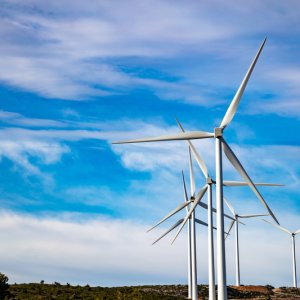
Power Auctions: the New Measuring Sticks
The stage is set for auction winners to answer the challenge of transitioning from positive results to tangible power plants that contribute to the supply of electricity nationwide.“With the conclusion of the first three editions of the long-term electricity auctions, US$9 billion in investments and 7,000MW of additional solar and wind power generation capacity are expected, effectively quadrupling the county’s renewable energy infrastructure by 2020 in comparison to the beginning of this administration in 2012,” says Pedro Joaquín Coldwell, Mexico’s Minister of Energy.
The convening power of the third edition was as strong as ever, as CENACE received 400 proposals from 48 bidders. That set a high bar for expectations, and the resulting average package price broke all records to date. “A new milestone was set by the third long-term electricity auction as the lowest MWh plus CELs package price was US$20.57. This is 38 percent lower than the average price at the second auction and 57 percent lower than the first auction’s package price.” Coldwell says.
A Bankable Sun Rises
Solar power was the biggest surprise, capitalizing on the technology’s recent downward trend in terms of development and installation costs for utility-scale PV systems. “Solar power was the decisive winner in Mexico’s energy auctions, with 74 percent of the megawatt hours awarded to solar in the first round and 54 percent awarded
in the second round,” says Albert Sunyer, Field Systems Sales Director of SunPower. The country’s average irradiation levels of 5kWh/m2 as reported by the Ministry of Energy make solar power an attractive source of energy nationwide. The data speak volumes: three auctions in 12 states are developing utility-scale solar PV projects with an installed capacity greater than 20MW. This means Sonora, Coahuila, Aguascalientes, Yucatan, Chihuahua, Guanajuato, San Luis Potosi, Tlaxcala, Jalisco, Zacatecas, Morelos and Baja California are well underway to reaping the benefits of their advantageous solar irradiation levels.
Should all auction projects come online as expected, the three long-term electricity auctions should inject almost 5,000MW of solar installed capacity, which in turn could prove a major selling point for smaller PV projects favored by the industrial, commercial and even residential sectors and consequently boost Mexico’s young distributed generation market.
Other Clean Energy Sources
The long-term electricity auctions are also setting a precedent as the first and only mechanism in which all clean energy technologies compete against themselves for power, energy and CELs. This disruptive design showcases the possibility of different renewable technologies being capable of coexisting under a positive sum game scenario. “It is a matter of finding the right places and the right resources, which does not necessarily mean that you will find yourself competing against other renewable resources. At the end of the day, we are looking to have local, diversified energy matrices that allow economies and governments to diversify power risks, to be able to use both fossil fuels and renewables to obtain an optimized power system,” says Angélica Ruiz, Vice President and Managing Director Mexico and Latin America of Vestas. The auctions are aligned with this vision as, so far, projects developed using solar power, wind power, combined cycle, hydroelectric, geothermal, and turbogas have come out winners.
While solar has claimed the auction crown, Mexico’s wind resource is not far behind, having won an aggregate 2.4GW of installed capacity between all three auctions, which shows a commitment to the country’s goal of having a diversified energy matrix and providing a balancing source of power to compensate solar’s availability issue. While Oaxaca is the favored location to date to develop wind farms, dominating with over 70 percent of the operational wind farms nationwide, other states are stepping up to take a shot at the wind power crown. “You can find great resources in Mexico, such as the state of Tamaulipas, Oaxaca, and the northern part of Baja California, where you have extremely good wind resources, with capacity factors of 40 percent on average,” says Ruiz.
Clearing House
Mexico’s energy regulators and authorities, in parallel to the private sector, engaged in a learning curve throughout each edition of the long-term electricity auctions. Yet, both have proven to be fast learners in a complex process aimed at providing open access to an entire market in a record three years. The successful results include an increased number of auction participants on a level playing field and a high amount of investment pouring in, to the tune of US$9 billion only for the auctions’ power-generation projects, as Coldwell outlined. The auction’s architects have also shown the capacity and ability to implement improvements, with new elements meant to foster the clean energy market’s competitiveness.
Compared to the first two editions, the third long-term electricity auction saw a commendable performance from the Clearing House. For the first time, private players other than CFE were enabled to purchase power, energy and CELs. Iberdrola and CEMEX – through Menkent – made the most of this new instrument and purchased 9 percent of the overall power, energy and CELs made available. As authorities work on the design of the fourth auction, the Clearing House is expected to outperform the third edition, with renewed confidence among private players. “In the long term, as the energy volume increases, the impact will be consequential and will be reflected in the final consumer price through increased volume and the number of private suppliers offering energy,” says Eduardo Reyes, Power and Utilites Partner of Strategy&, a PwC division.
CRE As Auction Executor
The year also saw the Ministry of Energy follow through on its intention to raise CRE to the level of a full-fledged energy regulator for the electricity market. Starting in 2018, CRE will inherit the responsibility of the electricity sector’s tariff publication from the Ministry of Finance and be conferred the additional attribution of overseeing the design and development of the fourth long-term electricity auction together with CENACE. The difference will be in how the two entities are switching roles. In the first three auctions, CRE acted as a technical adviser but it will now coordinate the design of the fourth auction, while CENACE will implement it and the Ministry of Energy will act as technical adviser. “CRE’s message to all interested parties is one of continuity and any eventual change will help make auctions more attractive to potential participants. Financial entities are growing accustomed to the auction’s new schemes and are developing project finance mechanisms. We want to maintain their interest in the auctions,” says Guillermo García, President Commissioner of CRE.
There are, of course, concerns regarding the auction results. “Project assignment mechanisms do not factor into the advancement status of a project and how close and probable it is that energy is delivered on the appointed date,” says Rubén Cruz, Energy and Natural Resources Lead Parnter at KPMG. Other voices in the sector are making the case for same-technolgy auctions. “The auction design continues to be perfected, encompassing an increasing number of positive elements and players. The Argentinian auctions, in which we also participated, allowed fixed quotas per technology – solar, wind, cogeneration – fostering competition among same-technology projects,” says Rafael Valdéz, Managing Director Latin America and the Caribbean of Envision.
















